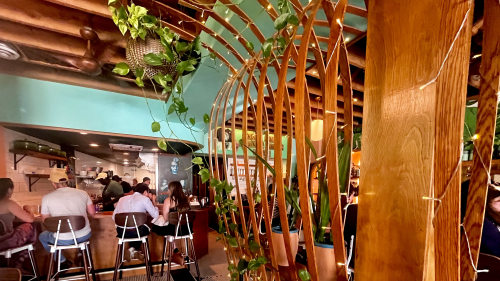It’s the Day of the Dead, a holiday widely celebrated in Mexico to offer remembrance of family members and friends who have died.
Before you grab a box of tissues and watch “Coco” for the umpteenth time, here’s a brief guide to Madison’s historic cemeteries, taking note of those that are buried there.
Forest Hill Cemetery
In 1857, the city, not two decades old, purchased 80 acres that would become Forest Hill Cemetery. The Argus and Democrat noted at the time, “It is beautifully located, contains a fine growth of thrifty timber, is high and undulating in all directions, and commands from nearly every part a fine view of the City, Lakes Mendota, Monona, and Wingra.”
One of the first US National Cemeteries established in Wisconsin, it is not only home to a plot of Union soldiers from the Civil War, but Confederate soldiers as well (who died while prisoners at nearby Camp Randall).
Let’s take a look at some prominent people from Madison’s history who are laid to rest here.
Robert “Fighting Bob” La Follette Sr. (1855-1925)
Buried in a simple grave near the rest of his family, including his son, Senator Robert La Follette Jr., “Fighting Bob” represented Wisconsin in both chambers of Congress and served as Wisconsin’s governor from 1901 to 1906. He ran for president in 1924 under his own Progressive Party. He lost to Calvin Coolidge but garnered nearly 17% of the nation’s vote as a 3rd party candidate.
He died just short of his 70th birthday of cardiovascular disease.
Eston Hemings Jefferson (1808-1856)
Thomas Jefferson’s son is buried in Madison. The son of one of our Founding Fathers and the enslaved Sally Hemings, Eston entered Madison’s community white-passing, becoming a prominent cabinet maker and musician.
His entire family is buried at Forest Hill, including his son, John Wayles Jefferson, who served as a white officer in the Civil War.
Eston Hemings Jefferson died in 1856.
Breese Stevens (1834-1903)
The mayor of Madison in 1884 and 1885, Breese Stevens practiced law, was involved in banking, and served as regent of UW-Madison. He was active in many civic organizations, including the Wisconsin Historical Society.
Passing on October 28, 1903, an article in the Minneapolis Journal reported that he “died at his home today from stomach trouble.”
Others buried at Forest Hill Cemetery include William Vilas (who gave us our zoo), Ernest Warner (Warner Park is named for him), and Romanzo Bunn, a judge with arguably the best name in the cemetery.
Resurrection Cemetery
Across the street from Forest Hill Cemetery is Resurrection Cemetery. Founded in 1949, when the Dioceses of Madison was formed, it combined two existing cemeteries: Holy Cross and Calvary. Those cemeteries were established in the mid-1800s to serve Madison’s Catholic populations.
Over 40 acres in size, some notable residents include:
Chris Farley (1964-1997)
The beloved “SNL” great was born and raised in Madison, before making his way to Chicago’s famed Second City and then the bright lights of “Saturday Night Live” and the glitz of Hollywood.
The fat guy in a little coat is not in a van down by the river. He’s entombed at the cemetery’s mausoleum behind the chapel altar.
Also buried at Resurrection Cemetery is William O’Connor (1886-1973), the first Bishop of Madison, and seven-year-old Annie Lemberger (1904-1911). She was murdered. The case remains unsolved.
Blooming Grove Cemetery
Abutting La Follette High School on Pflaum Road is the Blooming Grove Cemetery. Established in 1856, blink and you might pass it without knowing.
The oldest grave there is of Thomas Sawyer, who died in 1848. Also buried there are Confederate soldiers in a mass grave. Why they were transported to Blooming Grove for burial, rather than with their comrades at Forest Hill is unknown.
Effigy Mounds
Of course, before European colonization, American Indians had been living, and dying, for centuries. At its most, there were around 15,000 American Indian effigy mounds in Wisconsin, built between 350 and 2,800 years ago. There are still approximately 1,300 that exist in the Madison area. Most burial mounds, however, have been lost to colonization, urban development, and/or natural processes. There are about 4,000 mounds that still exist in Wisconsin.
- Forest Hill Cemetery | An effigy mound, in the shape of a goose, is located on the southeast side of the cemetery.
- Mendota State Hospital | The largest extant bird effigy mound.
- Man Mound | Near Baraboo, this is the only human-shaped effigy mound left in North America.
If the spirit moves you today, visit those we’ve lost and remember them. Coco would be proud.


















